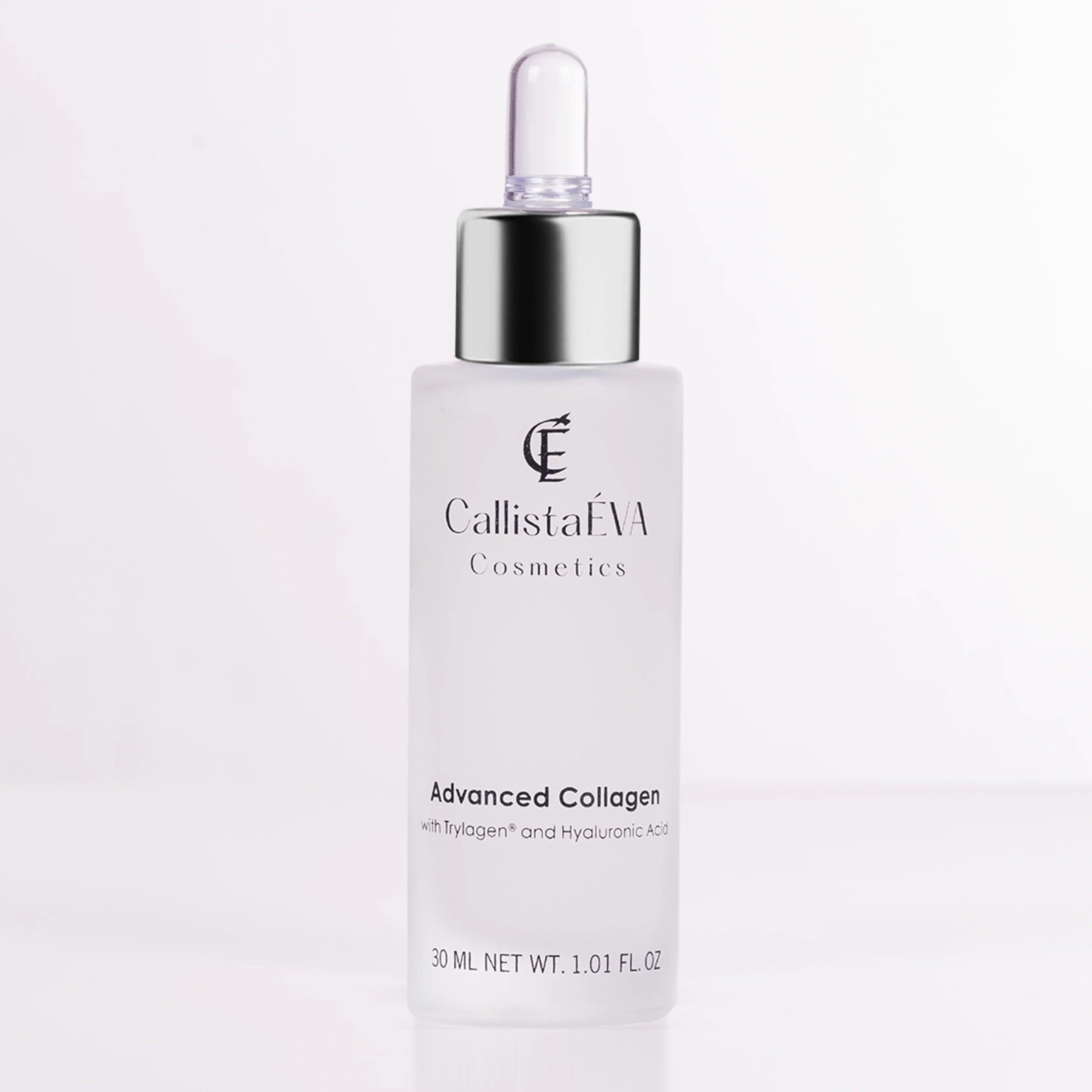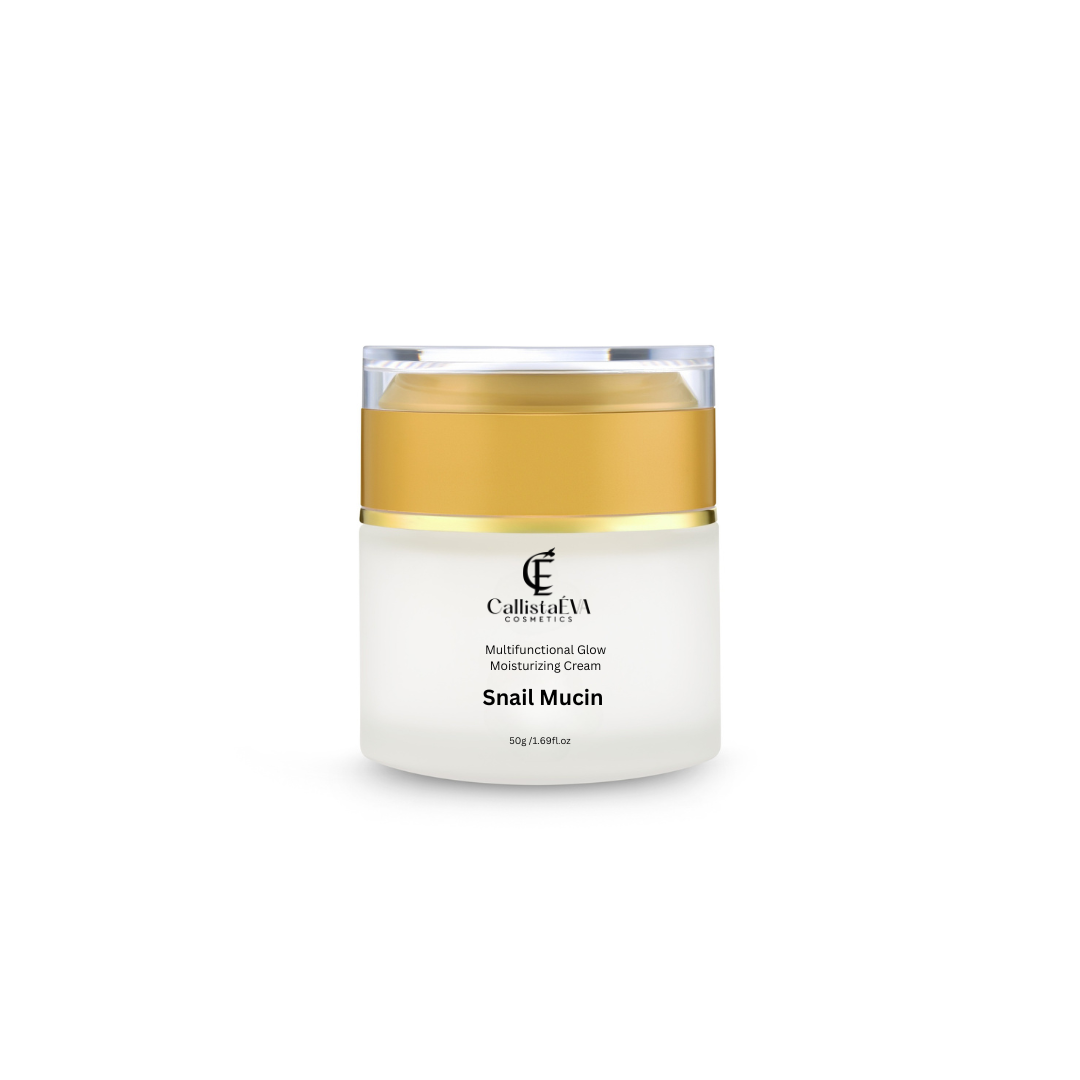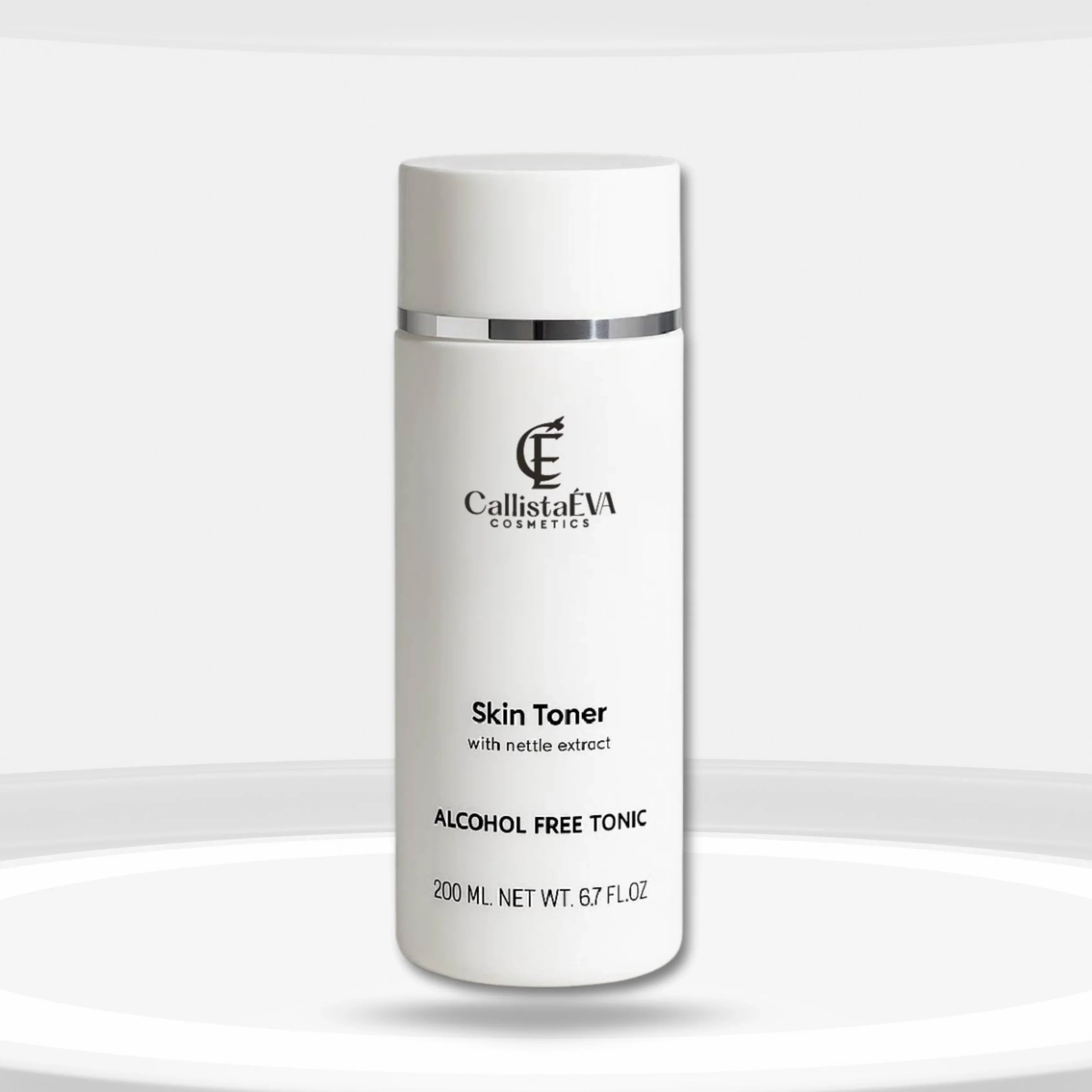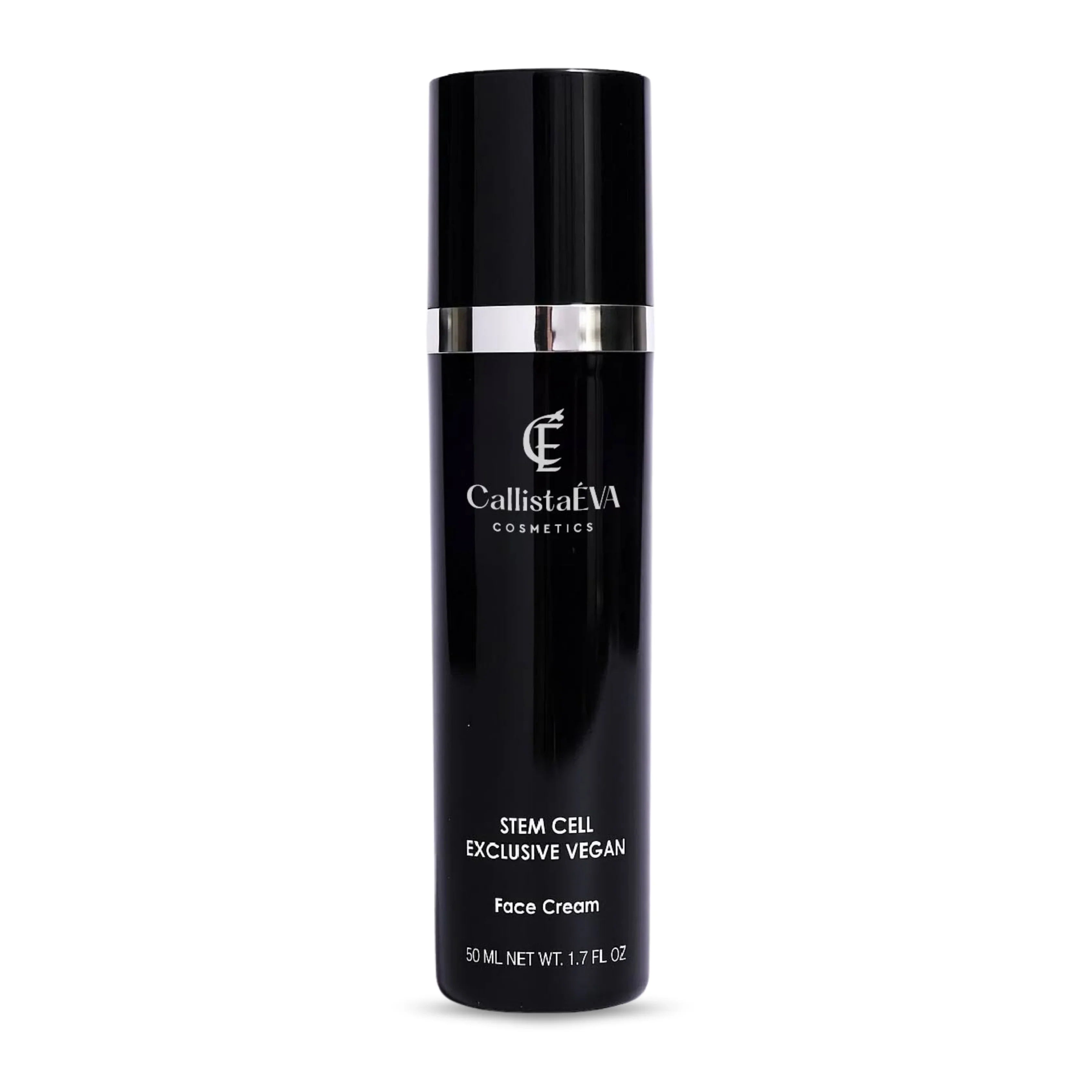If you’ve ever looked in the mirror and wished those fine lines around your eyes or forehead would fade without needles, you’re not alone. The skincare world is buzzing about needle-free alternatives to Botox, and one ingredient stands out: Argireline, also known as Acetyl Hexapeptide-8. But does it work, and is it worth including in your skincare routine?
This article breaks down what Argireline is, what the science says, and how it fits into modern, clean beauty, particularly for individuals who prefer non-invasive options. We’ll also show you how it works in synergy with advanced ingredients like plant stem cells in CallistaÉVA’s Stem Cell Face Cream.
What is Argireline?
Argireline is a synthetic peptide—essentially a short chain of amino acids. It works by targeting facial tension that causes expression lines. Think of it as a gentle, topical cousin of Botox. It doesn’t paralyze muscles, but it can help reduce the appearance of wrinkles caused by repeated facial expressions.
That’s why you’ll often see it described as “Botox in a bottle.” It’s used in creams, serums, and ampoules, especially those marketed for anti-aging and wrinkle smoothing.
Where Does It Fit in Your Routine?
Argireline is a great fit for:
● People in their late 20s to mid-40s looking to prevent or reduce early signs of aging
● Professionals who want results without downtime
● Anyone hesitant to use injectables
It’s commonly used in eye creams, serums, or face creams targeting the forehead, smile lines, and crow’s feet.
CallistaÉVA’s Stem Cell Face Cream, for example, combines Argireline with Swiss Apple Stem Cells, offering a powerful duo of relaxation and regeneration in one elegant formula.
What Does the Science Say?
There’s a lot of curiosity about Argireline, but what does clinical research actually show? Let’s walk through the most relevant findings.
Study 1: The Double-Blind Serum Trial
One clinical study applied a serum containing Argireline and hyaluronic acid to one side of the participants’ faces, twice daily for four weeks (2). The other side received the same serum without Argireline. While there were no serious side effects, the wrinkle reduction wasn’t statistically significant.
Takeaway: Argireline is safe, but its visible results may take longer than four weeks or may require more advanced delivery systems to perform better.
Study 2: Microneedle Patch with Argireline
In another clinical trial, a microneedle patch infused with Acetyl Hexapeptide-8 (Argireline) showed a significant improvement in wrinkle reduction compared to patches without it (3). Skin hydration also improved.
Takeaway: When combined with effective delivery methods like microneedles or paired with hydration agents like hyaluronic acid, Argireline shows real promise.
What Makes Argireline Different?
Unlike Botox, which requires a trained medical professional to inject, Argireline can be applied topically at home. This appeals to busy professionals, wellness-oriented individuals, and anyone seeking clean beauty alternatives.
Here’s why people are turning to it:
● Non-invasive: No needles, no bruising, no recovery
● Safe for daily use: No prescription or clinical appointment needed
● Works well with other skincare ingredients: Like plant stem cells, peptides, and hydration agents
● Cost-effective: More accessible than injectable treatments
According to a recent analysis of search trends from 2013 to 2023, online interest in Argireline has surged, especially with terms like “Botox in a Bottle” trending upward in 2022 (4). This growing popularity reflects a shift in how people approach anti-aging care.
Where Plant Stem Cells Come In
Argireline doesn’t work alone in high-performing skincare. That’s where ingredients like Swiss Apple Stem Cells come in. These are used in the same CallistaÉVA Stem Cell Face Cream to help protect and revitalize the skin.
Plants, especially apples with long shelf life like the Uttwiler Spätlauber, have stem cells known for their regenerative ability. These stem cells are loaded with phytohormones—natural compounds that support cell renewal and recovery from damage.
While live plant cells are hard to preserve in skincare, plant stem cell extracts can still support skin by delivering antioxidants and improving cell turnover (1). They also complement peptides like Argireline, tackling multiple aging signs at once: expression lines, dryness, and skin fatigue.
Combining Argireline + Stem Cells = A Smarter Strategy
Peptides like Argireline relax facial tension to reduce fine lines from repeated expressions. Plant stem cells boost cell vitality, improve moisture retention, and help your skin bounce back from stress or damage.
That makes the combination of both ingredients a smart, modern approach—especially for people who:
● Want noticeable results without injections
● Prefer skincare that supports long-term skin health
● Are shopping for science-backed, luxury beauty products that align with clean beauty values
Realistic Expectations
Let’s be clear: Argireline isn’t a miracle fix overnight. One study (2) even showed that visible wrinkle improvements weren’t significant after just four weeks. But when used over time, especially in well-formulated products with complementary ingredients like hyaluronic acid and stem cells, it can help improve the appearance of fine lines (3).
Unlike Botox, the changes are gradual, but that’s also what makes it more natural-looking and sustainable.
Who Is It For?
Whether you’re a career-focused woman juggling meetings and self-care, or a health-conscious man who prefers clean, effective skincare, Argireline fits seamlessly into a routine built on science and luxury.
CallistaÉVA’s clients include:
● Urban professionals seeking visible results from their skincare.
● Beauty lovers aged 25–45 who are ingredient-savvy.
● People prioritizing convenience and preferring non-invasive options.
● Shoppers who read product labels, want transparency and expect performance.
Where It Shines: The CallistaÉVA Stem Cell Face Cream
CallistaÉVA’s Stem Cell Face Cream brings together the power of Acetyl Hexapeptide-8 (Argireline) with Swiss Apple Stem Cells. It’s designed for skin that’s stressed, tired, or starting to show signs of aging.
Key benefits include:
● Helps soften expression lines without harsh methods.
● Supports regeneration and hydration for dull, tired skin.
● Feels luxurious yet gentle, perfect for daily use.
● Packed in an elegant, time-saving formula for busy lives.
Because it’s rooted in evidence-based skincare and developed for real-life results, this cream addresses what modern users truly want: visible results, not hype.
Final Thoughts
Aging is a natural process, but looking your age is optional. What’s changing is how people manage aging. Today’s skincare is not about chasing unrealistic ideals. It’s about confidence, science, and self-respect.
Peptides like Argireline represent a shift in the way people think about beauty. Instead of chasing instant fixes or invasive options, people are seeking sustainable, skin-friendly alternatives that align with their lifestyles.
Plant stem cells add to this by supporting the skin’s natural rhythm. And when combined, they help your skin look rested, firm, and hydrated, without needles.
References:
- Trehan, Sonia, Bozena Michniak-Kohn, and Kavita Beri. "Plant stem cells in cosmetics: current trends and future directions." Future science OA 3.4 (2017): FSO226.
https://pmc.ncbi.nlm.nih.gov/articles/PMC5674215/
- Henseler, Helga. "Investigating the effects of Argireline in a skin serum containing hyaluronic acids on skin surface wrinkles using the Visia® Complexion Analysis camera system for objective skin analysis." GMS Interdisciplinary Plastic and Reconstructive Surgery DGPW 12 (2023): Doc09.
https://pmc.ncbi.nlm.nih.gov/articles/PMC10665711/ - An, Ji Hae, et al. "Anti-wrinkle efficacy of cross-linked hyaluronic acid-based microneedle patch with acetyl hexapeptide-8 and epidermal growth factor on Korean skin." Annals of dermatology 31.3 (2019): 263.
https://pubmed.ncbi.nlm.nih.gov/33911590/ - Olsson, Sofia Eva, et al. "Public Interest in Acetyl Hexapeptide-8: Longitudinal Analysis." JMIR dermatology 7 (2024): e54217.
https://pmc.ncbi.nlm.nih.gov/articles/PMC10915729/














